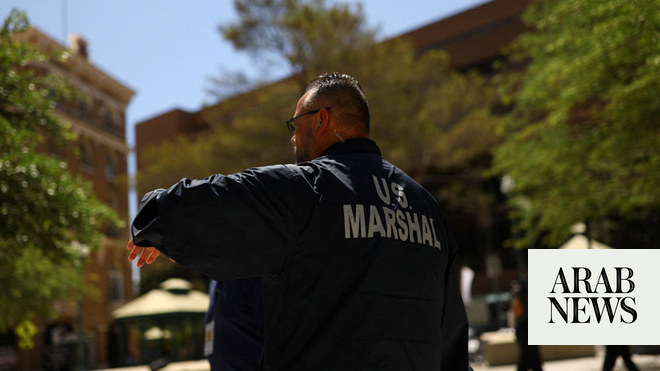WASHINGTON: Former President Donald Trump, who has a history of making inflammatory comments on race, has stepped up his attacks on 2024 White House contender Kamala Harris, claiming she “just happened to be black” for political gain.
But the reality is that the vice president, born to Jamaican and Indian immigrants, embraced his blackness long before he entered public office.
Harris was born in Oakland, California in 1964. Her father, Donald Harris, came to the United States to study economics, and her mother, Shyamala Gopalan, immigrated from India at age 19 and earned a doctorate in nutrition and endocrinology.
The couple met at the University of California, Berkeley, a center of student activism, and participated in the civil rights movement, sometimes taking their young daughter Kamala with them to protests.
Donald Harris remains a professor emeritus at Stanford University, and Gopalan, who contributed to the advancement of breast cancer research, passed away in 2009.
After the couple divorced, Gopalan raised Kamala and her younger sister Maya, instilling pride in their South Asian roots. She took them on trips to India, often expressing her affection or frustration in Tamil, Kamala wrote in her 2019 book, “The Truths We Hold.”
But Gopalan also knew that she was raising two black daughters.
“She knew that her adopted homeland would see Maya and me as black girls, and she was determined to see that we grew into confident, proud black women,” Harris wrote.
As a child, Harris was bused to a newly desegregated elementary school in a wealthy white neighborhood and attended a black church on Sundays.
“I am black, and I am proud to be black. I was born black, and I will die black,” Harris said on The Breakfast Club radio show in 2019.
But she continued to lean into her Indian heritage, appearing in a 2019 video where she bonded with fellow Indian actress Mindy Kaling as they made a guru.
“She has embraced her identity as a Black person and her Indian heritage,” said Kerry Haney, chair of Duke University’s political science department, adding that Trump’s “racist attacks” are aimed at bolstering his base.
When it came time to attend college, Harris chose Howard University, a historically black institution in the nation's capital, following in the footsteps of her hero, Thurgood Marshall, the first black justice on the U.S. Supreme Court.
She attended protests against apartheid in South Africa and joined the venerable Alpha Kappa Alpha sorority, founded to support black women. Today, its 360,000 members include leading figures in politics, the arts, science, and more.
“This is a powerful signal of unity with Black Americans,” said Christopher Clark, a political science professor at the University of North Carolina at Chapel Hill.
Following Howard, Harris enrolled at UC Hastings School of Law, where she was elected president of the black law school student body.
She was elected San Francisco District Attorney in 2003 and became California Attorney General in 2010, but media reports consistently referred to her as black or African American.
Some people have gone so far as to call her the “female Obama,” a reference to Barack Obama, who was elected the first black president of the United States in 2008.
There are similarities in the biographies of the two men. They are both of mixed race. Obama's father is a Kenyan economist and his mother is a white American.
Critics have questioned the authenticity of her African-American experience, and Clark suggested Trump may be using similar tactics to discredit Harris.
But as Teresa Wiltz writes in a column for Politico, being black in America has always been a “very broad spectrum” due to the legacy of slavery, and includes “a wide range of skin tones, hair textures, and life experiences.”
Wiltz points out that the most important black political figures in American history have often been mixed race, from abolitionist Frederick Douglass to activist and philosopher Angela Davis.
If Harris identifies as black, “we can and should believe her,” she said.
